Essential Guide to Cleaning Your Dryer Effectively
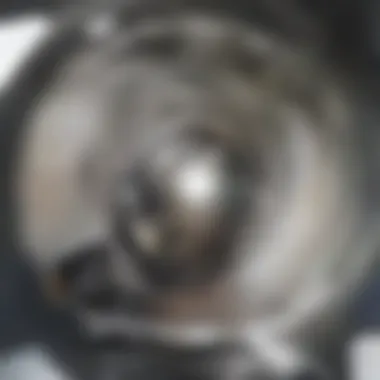
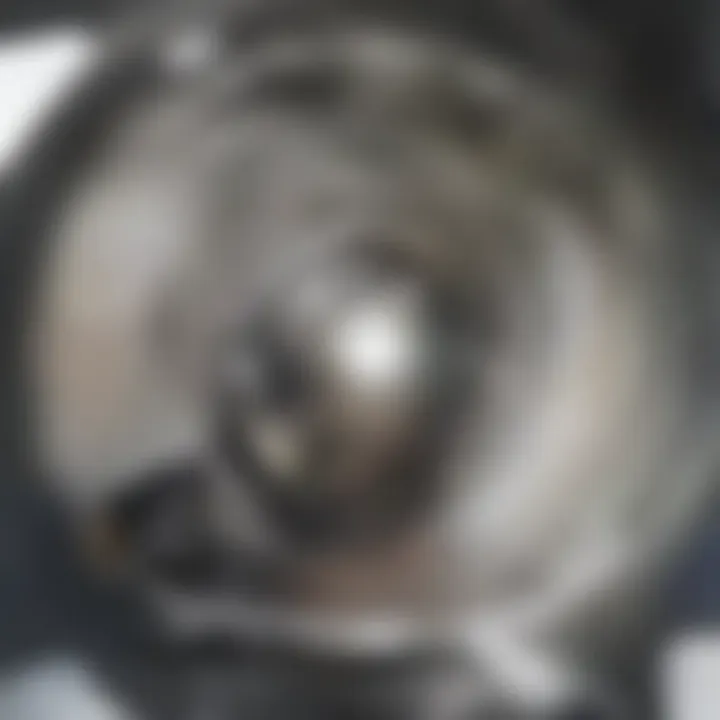
Intro
Cleaning out a dryer is more than just a routine chore. It holds significant importance for enhancing performance and maintaining safety in the home. Many homeowners overlook the accumulation of lint and dust, both of which can lead to inefficiency and potential fire hazards. This guide aims to provide a thorough understanding of how to clean your dryer effectively, detailing the necessary tools, step-by-step instructions, and maintenance strategies to ensure optimal functionality.
Understanding the dryer’s structure is key; it consists of both exterior and interior components that require different cleaning methods. Equally, awareness of common issues that arise from neglect can help you take proactive steps. Potential risks, including fire or damage to the appliance, necessitate strict adherence to maintenance routines.
In this comprehensive guide, we will delve into various aspects of dryer cleaning. Starting with tools and supplies, moving into cleaning techniques for both interior and exterior parts, and finally wrapping up with maintenance tips to extend the life of your dryer. By the end, you will possess the knowledge needed to keep your appliance safe and efficient.
Intro to Dryer Maintenance
Regular maintenance of your dryer is crucial for enhancing its functionality and safety. Neglecting this appliance can lead to various problems that not only reduce its efficiency but also pose risks to your home. By understanding the importance of dryer maintenance, you can ensure a longer lifespan for your equipment and minimize costs associated with repairs and replacements.
Importance of Cleaning Your Dryer
Cleaning your dryer should not be an afterthought. Every load of laundry generates lint and debris that accumulate in various parts of the machine. If not addressed, this build-up can lead to clogs and inefficiencies.
- Fire Hazards: Lint build-up is a leading cause of dryer fires. According to the National Fire Protection Association, failure to clean the dryer is a significant factor in such incidents.
- Decrease in Efficiency: A clogged lint trap and exhaust vent force the dryer to work harder, using more energy and time to dry clothes.
- Wear and Tear: Excessive lint can cause strain on the dryer’s components, resulting in quicker wear and potential breakdown.
By incorporating regular cleaning into your home maintenance routine, you are investing not only in the efficiency of your dryer but also in the safety and well-being of your household. It is wise to prioritize this task to avoid unforeseen complications in the future.
Understanding the Dryer Components
A thorough understanding of dryer components is crucial to effective cleaning and maintenance. Knowledge of the various parts of the dryer not only aids in the cleaning process but also informs users about potential issues and how to address them. Each component plays a role in the appliance's overall performance, and neglecting any of these parts may lead to inefficiency or breakdowns.
Benefits of Knowing Dryer Components
By familiarizing oneself with dryer components, homeowners can better assess the condition of the machine. This knowledge allows individuals to identify problems—which can range from minor blockages to serious mechanical failures—before they escalate into more costly repairs. Understanding parts can also enhance safety by ensuring proper disconnection and handling during cleaning.
In summary, knowing the structure and function of dryer components supports effective upkeep, significantly improving both performance and longevity.
Interior Parts of a Dryer
The interior of a dryer consists of several key parts that are essential for its operation. These include the dryer drum, heating element, lint trap, and exhaust vent.
- Dryer Drum: This is the large, cylindrical part where clothes are placed. It rotates to tumble clothes as hot air is circulated. Keeping this component clean is vital as residues can affect drying efficiency.
- Heating Element: This part is responsible for warming the air that dries the clothes. Over time, lint and debris can accumulate around it, causing inefficiency and possible overheating.
- Lint Trap: This collects lint that separates from the clothes during drying. Regular maintenance of the lint trap prevents clogs that can lead to improper airflow, overheating, or even fires.
- Exhaust Vent: This expels hot air and humidity outside. If not cleaned, lint can build up in the vent, which is a fire hazard and can slow down drying times.
Exterior Parts of a Dryer
The exterior of a dryer also contains important components that require attention during cleaning. These parts include the control panel, door seal, and casing.
- Control Panel: This is where settings are adjusted. Keeping the control panel clean ensures that buttons and knobs function properly, preventing unwarranted errors in cycles.
- Door Seal: This ensures that hot air remains inside during operation. A compromised seal allows heat to escape and can reduce efficiency. Regular checking for wear or grime is essential.
- Casing: The outer body of the dryer may accumulate dust and dirt. While primarily aesthetic, a clean casing can prevent dust from entering the machine and help maintain a safe environment.
Understanding the dryer components contributes significantly to effective cleaning and encourages proactive maintenance. A well-maintained dryer is not only more efficient but also safer and longer-lasting.
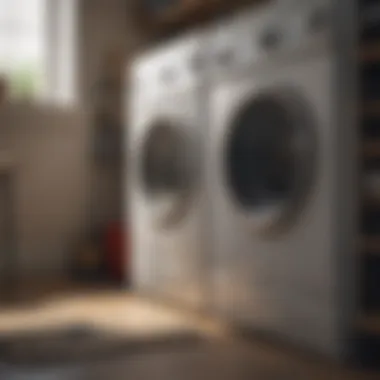
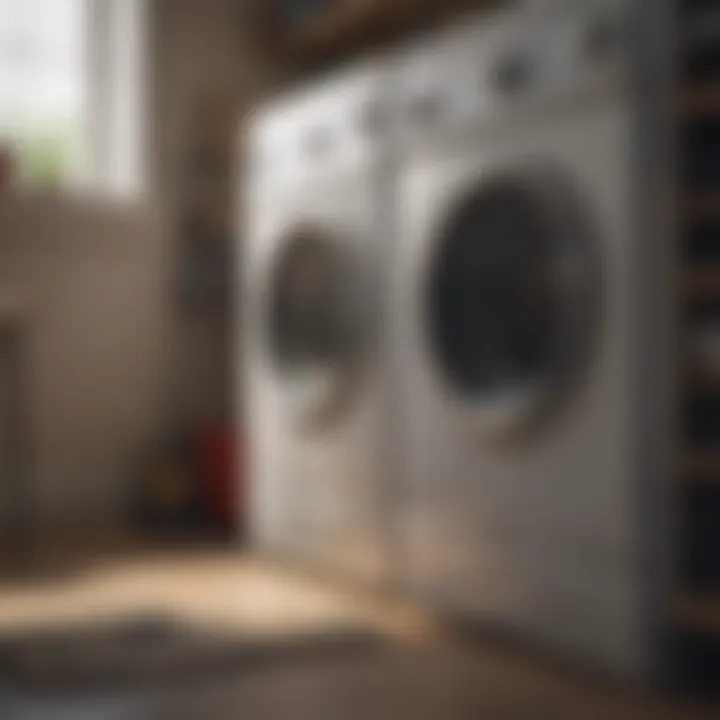
Gathering Necessary Tools for Cleaning
Cleaning your dryer requires more than just elbow grease. Having the right tools is essential for achieving a thorough clean. The benefits are considerable. First, proper tools expedite the cleaning process, allowing you to complete tasks efficiently. Second, they reduce the risk of damaging components inside the dryer or making the cleaning task more challenging.
Essential Cleaning Supplies
When preparing to clean your dryer, specific cleaning supplies are needed to effectively tackle dust, lint, and dirt. Here are some of the essential cleaning supplies you should gather:
- Vacuum Cleaner with a Hose Attachmnet: A vacuum can reach tight spaces in and around your dryer, especially in the lint trap and exhaust vent.
- Lint Brush or Flexible Wand: These are essential for removing accumulated lint in the drum and vent pathways. They can access spaces your hand struggles to reach.
- Microfiber Cloths: These cloths are non-abrasive and help wipe down the exterior of your dryer and the dryer drum itself without scratching surfaces.
- Mild Detergent or Baking Soda: For removing stubborn stains inside the drum, these gentler cleaning agents will help keep the surface clean without harsh chemicals.
- Screwdriver Set: Sometimes you need to disassemble parts of the dryer for deep cleaning, so having a set of screwdrivers ready is important.
- Utility Knife or Scissors: These can be handy for cutting tape or removing lint from tougher areas.
"A clean dryer not only helps your clothes dry faster but can also prevent potential fire hazards."
Gathering these tools sets the foundation for effective cleaning. A well-prepared cleaning routine not only enhances your dryer’s performance but also prolongs its lifespan. Ensure you have these tools on hand before you start the cleaning process. Doing so will make the undertaking smoother and more productive.
Step-by-Step Guide to Cleaning Your Dryer
Cleaning your dryer is crucial for maintaining its efficiency and extending its lifespan. A well-maintained dryer operates more effectively, consumes less energy, and reduces the risk of hazardous situations like fires. Following the steps below ensures a thorough clean, addressing both interior and exterior aspects.
Preparing Your Dryer for Cleaning
Before any cleaning can take place, proper preparation is necessary. First, ensure the dryer is disconnected from its power source. This can usually be done by unplugging it from the wall socket. If the dryer is hardwired, turn off the circuit breaker to eliminate any risk of electrocution.
Next, gather cleaning tools and supplies. Common tools include a vacuum cleaner equipped with a hose attachment, a soft brush, and damp cloths. Having these ready simplifies the cleaning process. Finally, move the dryer away from the wall to access the back and gain better visibility of the venting system. This will facilitate a more effective clean.
Cleaning the Lint Trap
The lint trap is a major component that collects fluff and debris from your laundry. Neglecting to clean it can hinder airflow and result in longer drying times. To clean the lint trap, first, remove it from its compartment, then use your hand to remove visible lint. After that, rinse it under warm water to wash away any remaining particles.
Once clean, allow the trap to dry completely before reinserting it. Consider doing this after every use to maintain optimal performance. A clean lint trap enhances the dryer’s efficiency and prolongs its life.
Removing Lint from the Exhaust Vent
After cleaning the lint trap, attention turns to the exhaust vent. This part can accumulate lint over time, leading to airflow blockages. To clean the exhaust vent, detach it from the dryer. Using a vacuum or a long flexible brush can help dislodge lint buildup.
Inspect the duct for any signs of damage or sharp bends that might impede airflow. After cleaning the vent, reattach it securely to prevent future issues. This step is crucial to mitigate fire risks and improve dryer performance.
Cleaning the Dryer Drum
The dryer drum requires attention, as residue from fabrics may build up over time. To clean it, use a damp cloth and a mild soap solution. Wipe down the interior of the drum thoroughly. Rinse out the cloth and wipe again with plain water to remove any soap residue. Ensure the drum is dried properly after wiping, as moisture can lead to mold growth.
Cleaning the drum can also improve the smell of your clothes and ensure they come out fresh.Every few months, this task should be on the list.
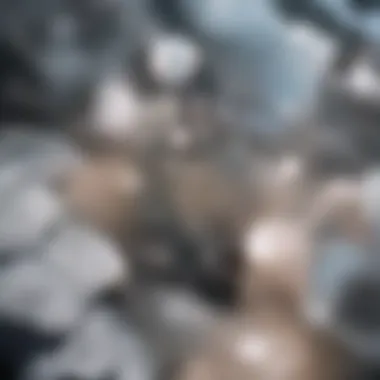

Wiping Down the Exterior
The exterior of the dryer also deserves your attention. Dust and dirt can accumulate on the surface. Use a damp cloth and a mild cleaner to wipe the outside surfaces of the dryer. Pay special attention to the control panel, as this area can accumulate oils and grime from hands.
By routinely cleaning the exterior, you maintain an overall clean appearance and ensure your appliance lasts longer. A clean surface also reflects the importance of maintaining the environment around the dryer.
Inspecting Internal Components
After thoroughly cleaning the dryer, inspecting its internal components is vital. This includes checking the belt, pulleys, and motor for any signs of wear. If you notice anything unusual like frayed belts or loose screws, consider replacing the parts immediately.
Additionally, vacuuming any accessible internal areas will further enhance efficiency. Regular inspection prevents minor issues from escalating into costly repairs or serious problems.
Summary: Each step in cleaning your dryer plays a significant role in maintaining its effectiveness and safety. Take time to perform these tasks routinely, reducing clutter and prolonging appliance life.
Preventative Maintenance for Dryers
Preventative maintenance is crucial for extending the life of your dryer while ensuring its efficient performance. Neglecting this aspect can lead to numerous complications, including reduced efficiency, higher energy bills, and even fire hazards. By implementing a proactive maintenance schedule, homeowners can not only keep their appliances running smoothly but can also potentially save money in the long term.
Proper preventative maintenance involves regular cleaning, timely inspections, and ensuring each component operates optimally. The benefits are clear: you enhance the longevity of your machine, avoid costly repairs, and maintain a safe living environment.
Setting a Cleaning Schedule
Establishing a cleaning schedule for your dryer is a necessary step in maintaining its performance. Regular upkeep should be aligned with how often the dryer is used. If you frequently dry large loads, aim for more frequent cleaning, perhaps every few weeks. However, if your dryer sees less use, a monthly or bi-monthly schedule might be sufficient. This involves cleaning the lint trap after every use and undertaking more comprehensive cleaning, such as vacuuming the vent and inspecting the drum, at your scheduled intervals.
Keeping a clear record of your cleaning schedule can help ensure you stay on track and don’t overlook these important tasks.
Regular Inspection Tips
Inspecting your dryer regularly is equally important. Look for signs of wear and tear, including frayed cords or malfunctioning buttons. It is advisable to check the exhaust vent, ensuring it is not clogged with lint. A simple visual check can help identify potential issues before they escalate.
Make use of the following quick inspection tips:
- Check the lint trap for any lint build-up.
- Inspect the venting system for blockages or damage.
- Examine power cords for fraying or any signs of distress.
- Listen for unusual noises during operation, which may indicate mechanical issues.
By remaining vigilant and conducting regular inspections, you can address small problems before they evolve into major malfunctions. This proactive approach can save time and resources, and ultimately help maintain a safe household.
Common Problems Resulting from Poor Maintenance
Regular maintenance of your dryer is critical not only for its longevity but also for your safety. Poorly maintained dryers can lead to several significant issues that are often overlooked until it is too late. Understanding these problems can help you prioritize cleaning and maintenance tasks effectively. Moreover, being aware of the risks associated with neglect can encourage consistent care. Below, we explore three primary problems: fire hazards, decreased efficiency, and unusual noises.
Fire Hazards Associated with Lint Build-Up
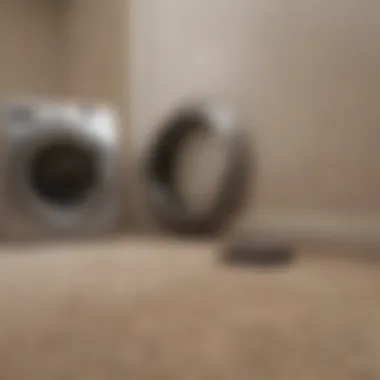
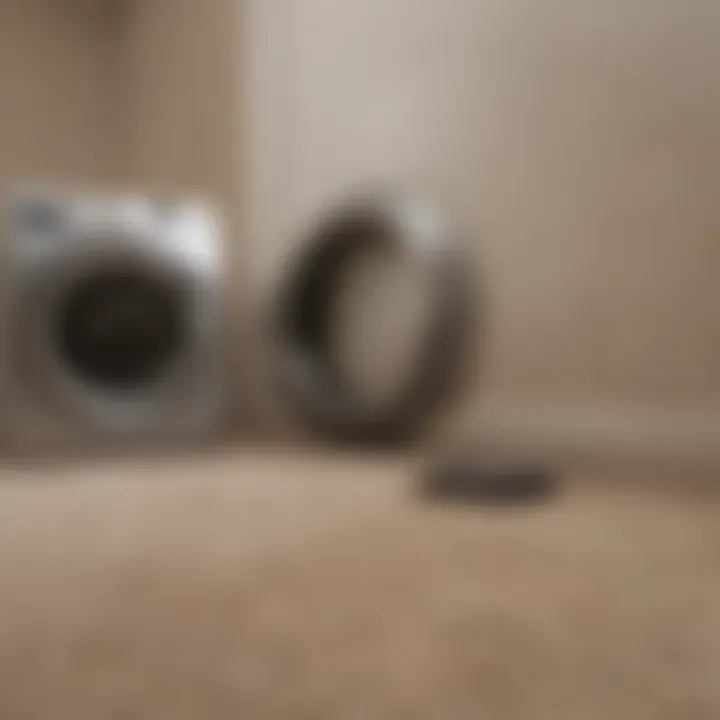
Lint build-up is one of the most common issues that can arise from neglecting dryer maintenance. When lint accumulates in the lint trap or exhaust vent, it restricts airflow. Restricted airflow can lead to overheating and create the perfect environment for a fire to start. According to the National Fire Protection Association, dryers are one of the leading causes of house fires. In 2020 alone, there were nearly 15,000 dryer-related fires reported. Even a small amount of lint can become a fire hazard when heated. To reduce risk, it's vital to clean the lint trap after each use and frequently check and clean the exhaust vent.
"Neglecting to clean your dryer can turn a simple chore into a dangerous situation. Always prioritize safety."
Decreased Efficiency and Increased Energy Costs
Another major issue tied to poor dryer maintenance is reduced efficiency. A dryer that has built-up lint or clogged vents struggles to circulate air properly. This inefficiency forces the appliance to work harder, leading to longer drying times. Therefore, it may seem convenient to ignore minor maintenance, but it can lead to increased energy bills. The Department of Energy reports that running a dryer that is not well-maintained can raise energy costs significantly. In order to maximize your dryer’s efficiency, it's essential to maintain it regularly, thus reducing drying times and saving you money in the long run.
Unusual Noises and Performance Issues
When a dryer is not maintained, it can also exhibit unusual noises indicating deeper mechanical problems. For instance, squeaking, grinding, or thumping sounds might suggest that internal components like bearings or the drum rollers are faulty. Ignoring these signs often leads to more severe performance issues, which could result in costly repairs. Regularly inspecting the dryer and listening for these noises can help identify problems early. Addressing performance issues promptly not only keeps the dryer functioning efficiently but also saves money on future repairs.
Maintaining your dryer is not just about cleaning; it is crucial for safety and efficiency. By understanding the common problems that arise from poor maintenance, homeowners can take proactive steps to ensure their dryers operate smoothly and safely.
Safety Considerations
Cleaning your dryer is not only beneficial for maintaining its efficiency but also essential for ensuring your safety. Therefore, understanding and applying proper safety protocols when performing any maintenance is critical. This section outlines the necessary safety precautions to take before, during, and after cleaning. Missteps in safety can lead to injury or even catastrophic events like fires. Here, we focus on two primary aspects: disconnecting power and using appropriate tools.
Disconnecting Power Before Cleaning
Before you begin any cleaning procedure, it is imperative to disconnect the power supply to your dryer. This step ensures that the appliance will not start unexpectedly, which could lead to potential injuries. To do this:
- Unplug the dryer from the wall socket.
- Turn off the circuit breaker that powers the dryer to further ensure there is no accidental activation.
- If your dryer is gas-powered, shut off the gas supply line.
Taking these steps significantly reduces risks while allowing you to clean with confidence. Always treat electricity and gas with respect.
"Safety is not just a guideline; it is a requirement. Taking simple steps like power disconnection can save lives."
Using Proper Tools to Avoid Injury
Using the right tools is crucial during the cleaning process. Not only does it enhance efficiency, but it also prevents injuries. Consider the following tools as essentials:
- Vacuum Cleaner with Hose Attachments: This is useful for removing lint from the dryer vent and trap.
- Soft Cloths or Microfiber Rags: These are suitable for cleaning the dryer drum and exterior without scratching.
- Screwdrivers: Needed if you must remove panels to access internal components.
- Lint Brushes: Specifically designed to reach deep areas and effectively remove lint build-up.
When using tools, ensure they are in good condition. Dull or damaged tools can slip and cause harm. Moreover, avoid using makeshift tools as they may not be designed for the specific tasks, increasing the chances of accidents.
Additionally, keep your workspace tidy. Clutter can cause trips and falls, which can lead to serious injuries. Always focus on what you are doing and avoid multitasking when handling tools or performing cleaning.
Finale
Cleaning out your dryer is not merely a suggested task; it is an essential practice that significantly impacts the safety and efficiency of your appliance. Throughout this article, we have explored the importance of regular dryer maintenance, providing you with the tools and techniques necessary to carry out a comprehensive cleaning.
The significant benefits of maintaining your dryer go beyond mere function. By keeping your dryer clean, you enhance its efficiency, which can lead to lower energy costs. Moreover, a clean dryer mitigates the risks associated with fire hazards due to lint accumulation. Additionally, regular maintenance can prolong the lifespan of your appliance, saving you from the expense of premature replacement.
Key considerations when implementing these cleaning practices include:
- Understanding the components of your dryer, both interior and exterior.
- Using the right tools for cleaning without causing damage.
- Setting a schedule for regular maintenance checks ensures your dryer operates at its best.
"A clean dryer is a safe dryer. Regular cleaning not only keeps your appliance efficient but also significantly reduces the risk of fire hazards."















